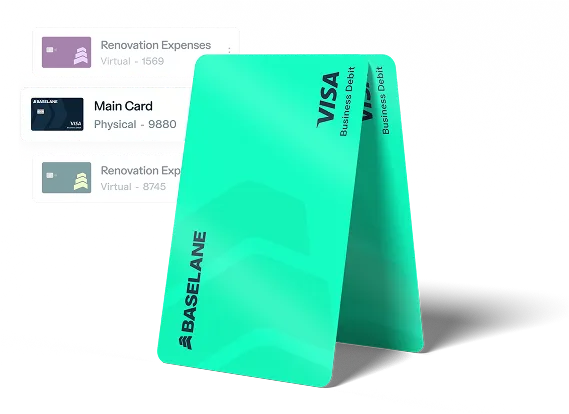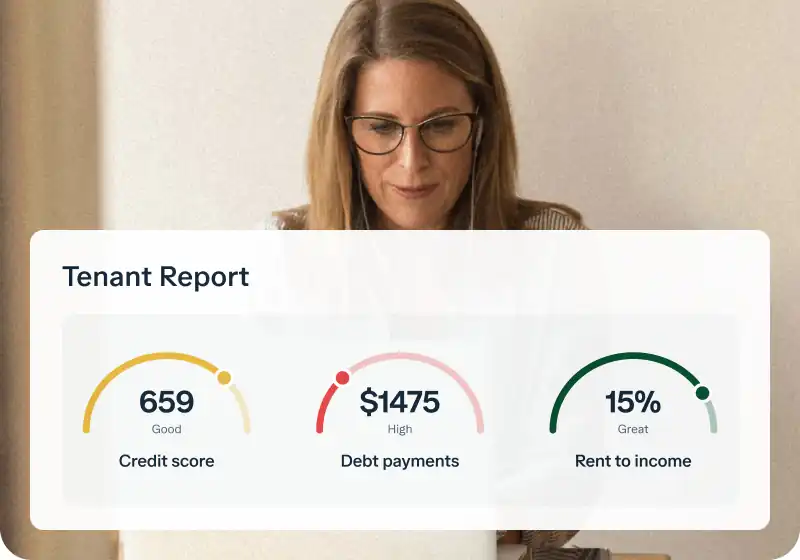You start your day dealing with messy, non-automated rent payments—tracking money, sending reminders, and confirming deposits. This manual work drags you into the "infinite workday" and keeps you from activities that actually grow your money.
Picture your business running on a secure digital system where rent arrives automatically, alerts are instant, and you have time to focus only on buying more properties.
The way to get this control and free up your hours is by setting up automated direct deposit rent payments. This guide shows you how to use this secure, cheap electronic method to save time, clearly see your money, and make your rental business run smoothly.
Key takeaways
- Direct deposit is an ACH credit, the most stable and low-cost way to receive rent.
- Automated direct deposit rent payments run on the secure electronic network used by major banks, giving you clear control while eliminating manual tracking.
- The right direct deposit payment solution automatically tags every payment to the correct property and Schedule E category. This makes annual tax prep effortless and helps you gain clarity & control over deductions.
- Use an integrated banking platform to create unlimited accounts and fully automate your income stream to take back time and focus on your next acquisition.
What is direct deposit?
Direct deposit is a specific type of ACH payment.
It is critical to understand that the terms are closely related: direct deposit is simply the common name for an ACH credit transaction.
- ACH is the network: The ACH is the secure electronic network that processes electronic funds transfers (EFTs) in large batches. This batch processing makes it the most cost-effective and reliable method for recurring bank-to-bank transfers.
- Direct Deposit is the transaction: When rent is paid this way, it is an ACH credit—a payment "pushed" electronically from the tenant’s bank directly into your account.
By operating on the ACH network, your direct deposit rent payment system gains instant access to the electronic infrastructure necessary for timely, low-cost financial transactions, guaranteeing a professional and reliable payment flow.
Why should you use automated direct deposits for rent collection
Using a direct deposit system through a specialized banking platform is the quickest way to minimize operational lift and achieve true payment predictability.
The largest benefit is the time you get back, allowing you to focus on high-value activities instead of day-to-day administration.
- Ensure predictable cash flow: Direct deposit rent payments are automatic and recurring. Once a tenant enrolls in auto-pay, the money is scheduled to leave their account on the due date every month, improving the consistency and predictability of your cash flow.
- Eliminate manual tracking and errors: When you accept rent via checks or P2P apps (like Zelle/Venmo), you spend hours reconciling statements and correcting data entry errors. Direct deposit payments, processed through an integrated platform, are instantly tagged to the correct tenant, property, and unit.
- Improve tenant satisfaction: Tenants overwhelmingly prefer the convenience of setting up a single, automatic online payment. Providing a seamless digital experience enhances satisfaction, which helps reduce turnover and vacancy costs.
How to set up direct deposit rent payments
Setting up an automated, compliant direct deposit system requires using a platform built for property management, not just a standard bank account.
Step 1: Choose an integrated rent collection platform
While any traditional bank can receive an ACH direct deposit, an integrated platform automates the entire payment workflow. The platform must combine rent collection with bookkeeping and banking. This eliminates the data lag and errors inherent in syncing multiple third-party tools (e.g., trying to link a rent app with QuickBooks).
Check transaction costs: Confirm that ACH transfers (direct deposits) are free for both you and your tenant. High fees erode the benefits of moving away from checks.
Step 2: Set up your dedicated financial accounts
Before collecting the first payment, ensure your receiving accounts meet legal and organizational standards.
- Open a business banking account: This is the non-negotiable starting point. Whether a checking account for daily operations or a savings account for reserves, the account must be separate from your personal finances.
- Set up separate accounts for clarity: Use dedicated accounts to separate funds by function: one for Operating Funds (to receive rent), one for Maintenance Reserves, and required Security Deposit Accounts.
Document check: If you are operating under an LLC, you'll need your Employer Identification Number (EIN) and business formation documents to open the business account.
Read our detailed guide to learn how to set up a business bank account for your rental property.
Step 3: Configure terms and enroll the tenant
The actual setup is pretty simple once the framework is in place.
- Input terms: Enter the rental address, rent amount, due date, lease terms, and the relevant bank account in which you want to receive the deposit.
- Send invitation: The system sends a secure invitation link to the tenant.
- Tenant enrollment: The tenant securely links their bank account by adding their bank’s routing number and account details and selects the option to set up auto-pay—the recurring ACH credit—for the monthly rent.
Direct deposit legality and enforcement
Generally, you can require tenants to pay rent via direct deposit through a specific platform, provided they include this requirement in the lease agreement before the tenant signs it.
In most U.S. states, rent payment methods are a matter of contract, meaning you and the tenant agree to the terms laid out in the lease. If the lease specifies that rent must be paid electronically via your chosen service, the tenant is typically bound to that method.
However, there are two primary legal nuances to be aware of:
- The "Check as Payment" Tradition: Many older state laws, and even some federal rulings, recognize a check as a legal tender for payment. While you can mandate electronic payments, you may need to ensure your method does not unlawfully refuse all forms of paper payment in jurisdictions with "must accept paper check" laws. A dedicated platform often solves this by simply refusing non-conforming payments.
- No-Fee Mandate: Some states may prohibit or restrict landlords from requiring a payment method that carries a high fee for the tenant. Since ACH direct deposit is typically the cheapest electronic method (often free), this risk is mitigated.
State examples on payment requirements
Landlord-tenant laws vary significantly by state and even city, so consultation with a local attorney is always advised.
Mitigating risks associated with direct deposit
While ACH direct deposit is the safest, most reliable method for collecting rent, there are certain risks associated. We’ve listed some of the common ones and how to resolve them.
Risk: Chargebacks or insufficient funds (NSF)
Chargebacks occur when a transfer fails due to insufficient funds or other bank errors, disrupting your expected cash flow.
Solutions
- Receive immediate notification: Your payment platform should instantly notify you of a failed transfer so you can act quickly.
- Block partial payments: To protect your rights during eviction proceedings, your system must explicitly block tenants from making partial rent payments.
- Automate late fees for rent: Enforce your lease terms strictly by having the platform automatically apply late fees the moment a payment is missed. For example, Baselane’s rent collection automatically applies late fees based on your lease terms and explicitly blocks partial payments, protecting your cash flow and legal position.
It is also a good practice to send a late rent notice to the tenant informing them of the failed payment. It helps ensure they’re aware of the failed payment and can take correective action promptly. In case the tenant moves out without making full rent payment, make sure to collect unpaid rent by usign legal methods like taking it out of their security deposits.
Risk: Security and fraud concerns
Any electronic payment system carries the risk of data compromise or unauthorized transactions if not properly secured.
Solutions
- Use bank-level encryption: Ensure your platform uses high-level data encryption to protect sensitive financial information for both you and your tenants.
- Implement multi-factor authentication (MFA): Require MFA for account logins to add an extra layer of protection against unauthorized access.
- Control vendor spending: Use virtual debit cards with custom spend limits for contractors or property managers to limit financial exposure.
Risk: Data discrepancy and audit failures
Using multiple unconnected tools (e.g., a rent app synced to a third-party bookkeeping tool) creates data lags and discrepancies that complicate tax season.
Solutions
- Use integrated software: Choose a single platform where rent collection is directly linked to banking and bookkeeping, creating one source of truth for your finances.
- Mandate auto-tagging: Ensure that the electronic payment carries all the necessary data to automatically categorize the transaction to the correct property and Schedule E line item.
Receive direct deposit rent payments with Baselane
Baselane is purpose-built to be the expert partner that handles the complexity of ACH and direct deposit, allowing you to focus on your portfolio. You get the all-in-one advantage of banking, automated rent collection, and bookkeeping seamlessly integrated.
Here’s how easy it is to receive direct deposit rent payments with Baselane:
- Open your account (<1 minute): Sign up for a free Baselane account and open an online checking or high-yield savings account.
- Create unlimited accounts: Instantly set up unlimited accounts for each property and security deposit to maintain full compliance and organization—no monthly fees or minimum balances.
- Automate rent collection: Set up recurring ACH direct deposit rent payments, late fees, and reminders, making the system easy for both you and your tenant.
- Invite tenant: Invite tenants to a dedicated portal to allow them to set up auto-pay and get visdibility into rent payments.
- Get paid and track automatically: When the tenant’s direct deposit hits your account, our AI-powered bookkeeping instantly auto-tags the transaction by property and the correct Schedule E category, delivering real-time cash flow insights.

You get reliable, on-time rent payments deposited directly into FDIC-insured accounts while eliminating hours of manual bookkeeping, helping you finally grow passive income.
Conclusion
Moving to automated direct deposit rent payments is a pivotal step in achieving financial freedom as a landlord. It solves the core problem of inconsistent cash flow and eliminates the tedious work of manual reconciliation.
By choosing an integrated platform that handles the ACH network, banking compliance, and automated bookkeeping under one roof, you are investing in a system that works for you. Stop working for your properties and let your financial systems handle the complexity.
Ready to automate your direct deposit rent payments and simplify your financial life?
FAQs
Is there a fee for direct deposit rent payments?
For the landlord, direct deposit (ACH) transactions are typically free when using a dedicated rent collection service like Baselane. Tenants may incur a small fee if they choose to pay by debit or credit card, but the preferred and most reliable ACH bank transfer should be free or very low-cost to incentivize its use.
What is the fastest way to receive rent payments?
ACH transfers (direct deposits) typically take 2 to 5 business days to process. Platforms like Baselane offer QuickPay to reduce this time to as little as two business days. Wire transfers are faster (hours), but they are too expensive for recurring rent payments.
Do I need a business bank account to accept direct deposit rent payments?
While you can technically receive a direct deposit into a personal account, you should always use a separate business bank account for your rental property income. This is crucial for separating your finances, demonstrating professionalism, simplifying tax filings, and protecting your personal assets from liability.

















